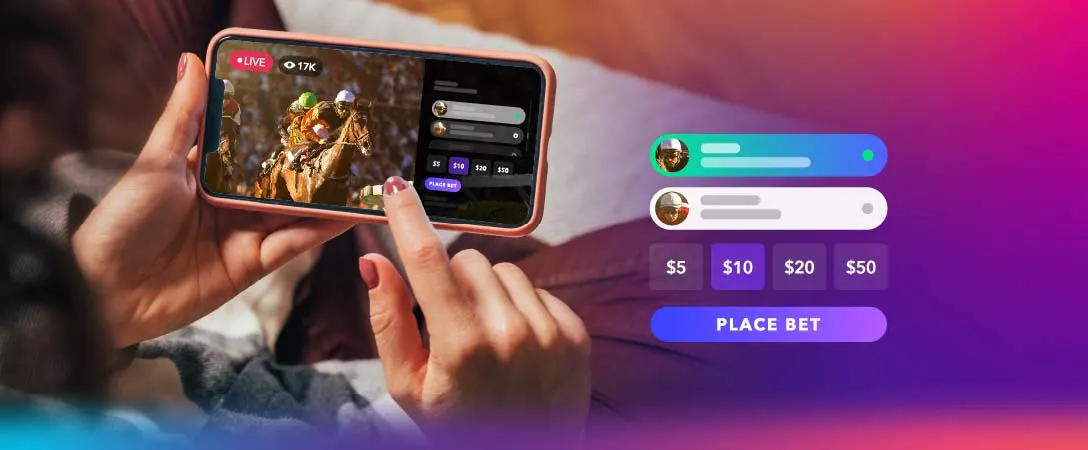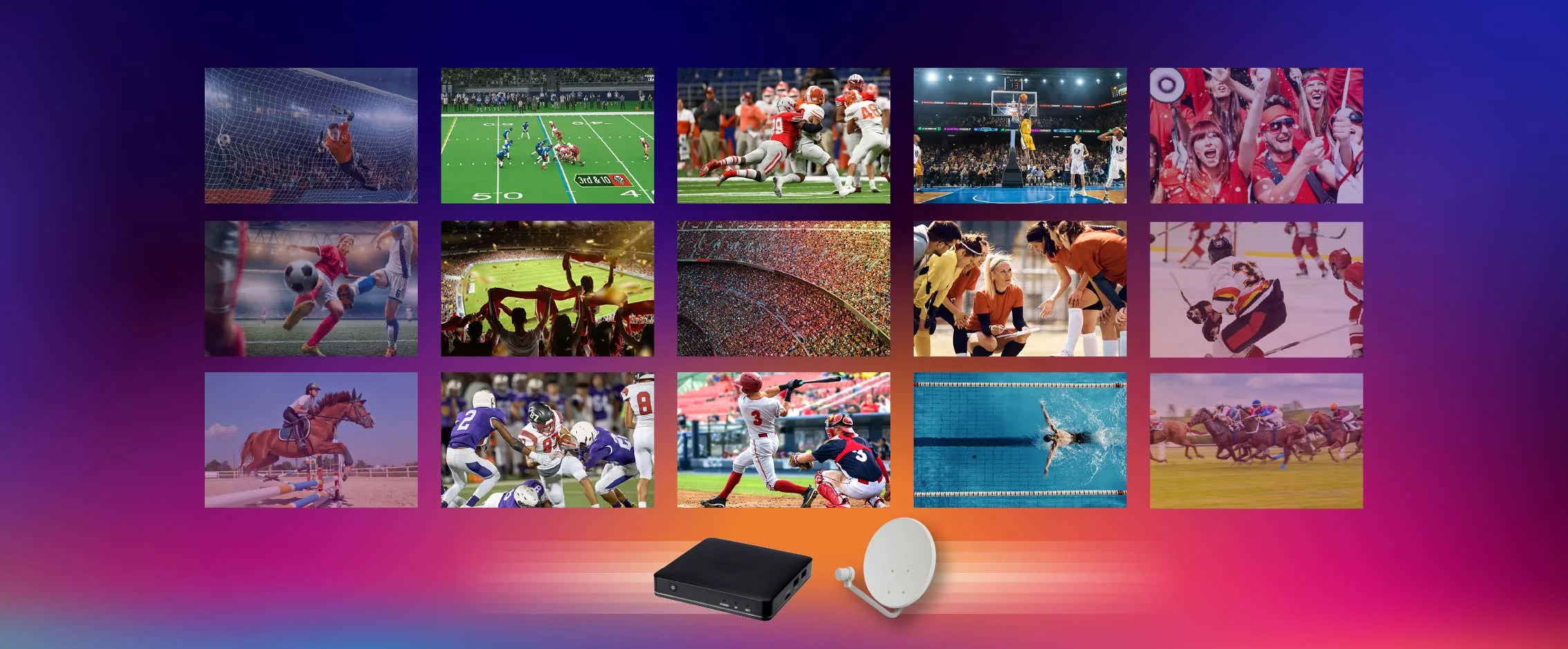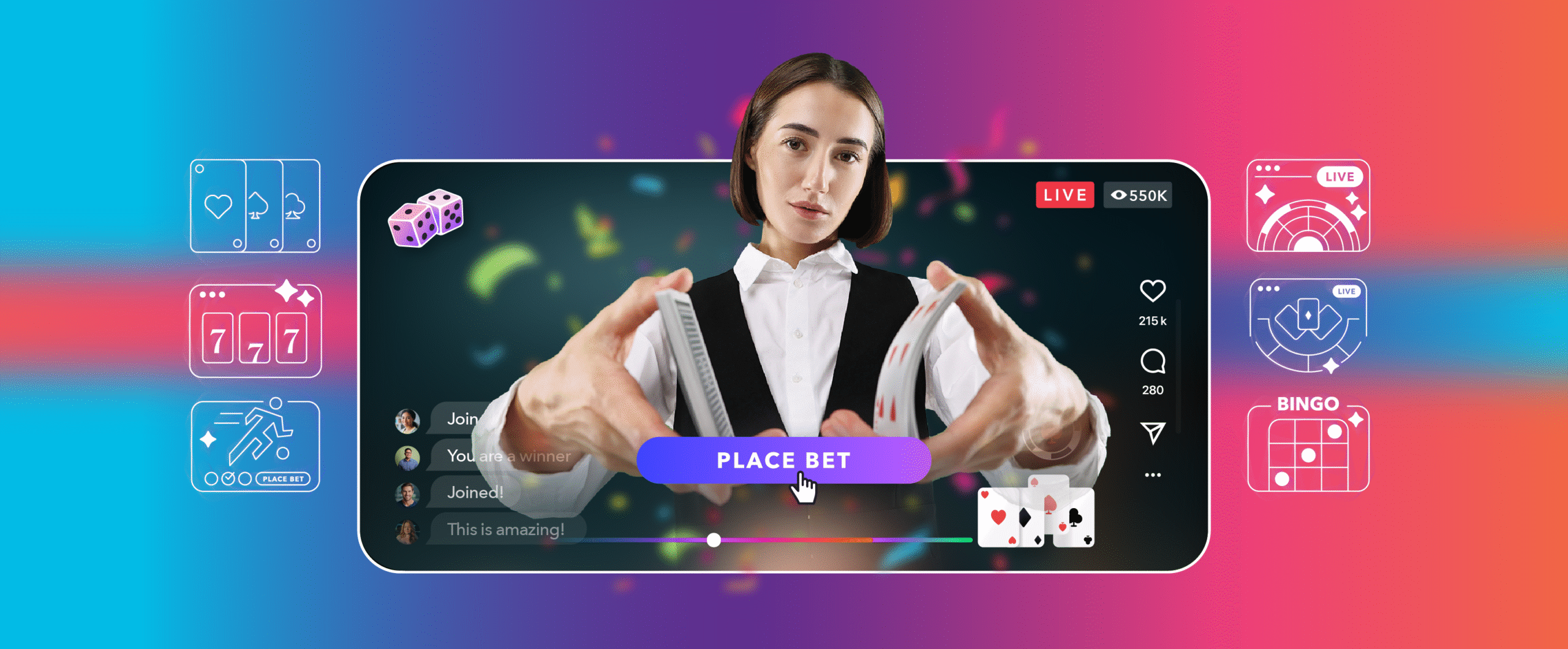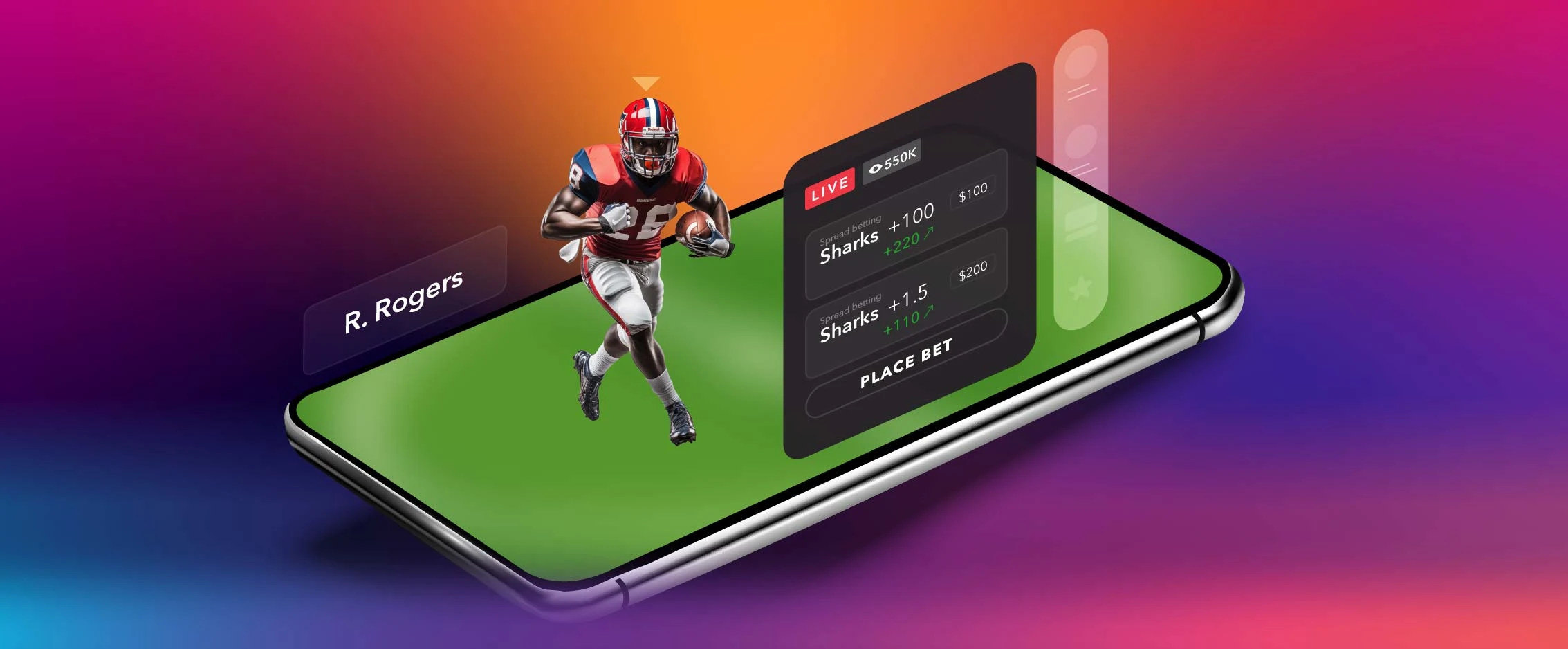Latency isn’t one-size-fits-all
In sports betting, every second counts. High latency can lead to rejected bets, missed opportunities, and lost revenue. However, not all use cases require the same latency level, different sports and formats demand different streaming latencies to deliver the best experience.
Short-duration events (e.g., horse racing)
For fast-paced events like horse racing, ultra-low latency is critical, with an ideal target of under 500 milliseconds. This ensures the widest possible betting window, giving viewers more time to gather relevant information before placing their bets and increasing the amount of wagers accepted before the race ends.
Live sports betting (e.g., football, basketball)
In traditional live sports betting, a latency of around 1–2 seconds is typically ideal. This allows the video stream and metadata (such as scores or player stats) to stay in sync, creating a smoother and cohesive experience. Historically, video streams often lagged behind data feeds, impacting the synchronization of viewer engagement. While data overlays offer crucial insights, the worst experience a user can have is when a data overlay already reveals what’s happening next in the game, thereby spoiling the streaming and betting experience.
Esports betting
In esports betting, live match streams are often first sent to professional traders or trading systems. These traders analyze the gameplay in real time to generate betting odds based on player performance, team strategies, and in-game events. The odds are created specifically for viewers to place bets as the match unfolds. Once the odds are ready, they are delivered to viewers together with the video stream with a latency of about 5 seconds. This short delay keeps the stream and odds aligned, allowing users to make timely and informed wagers.
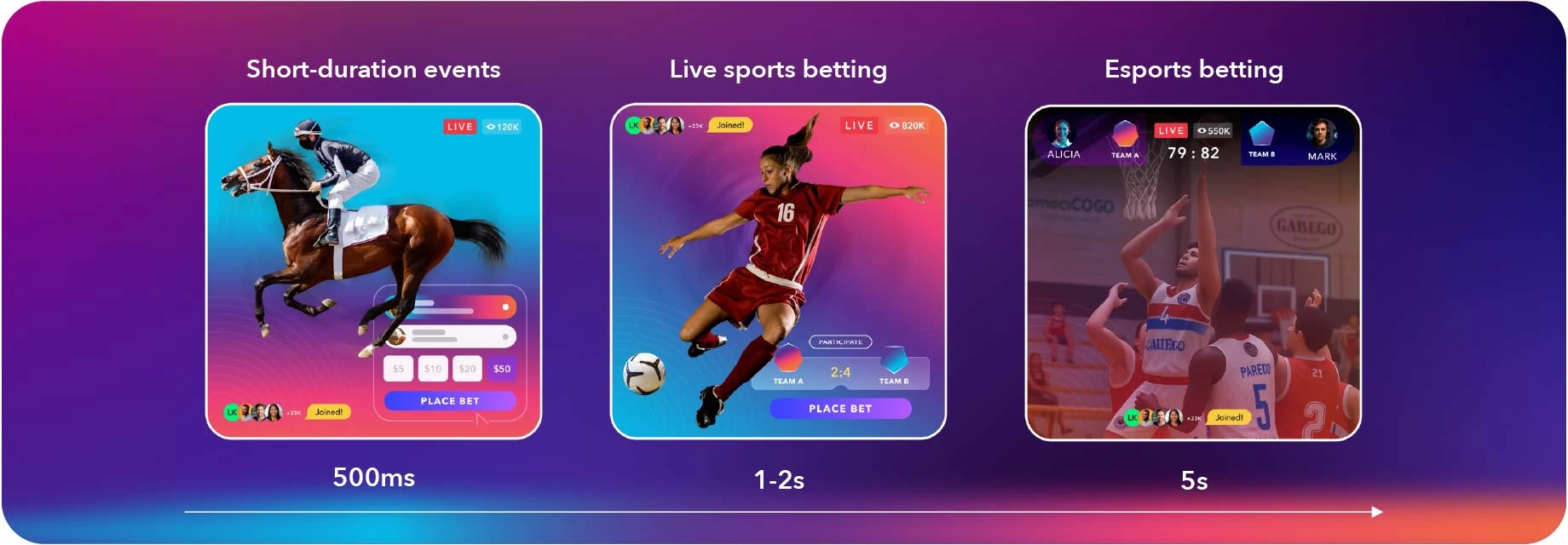
Why latency matters in sports betting
As described above, offering the right latency for different types of sports betting brings multiple benefits that impacts user experience, engagement, and revenue. Here are some key benefits:
Maximized betting window & improved in-play betting experience
Lower latency means a longer betting window, allowing more valid bets to be placed before outcomes are decided. This is especially important for short-duration events and in-play betting, where every second counts.
For example, a horse racing betting provider using Dolby OptiView Streaming significantly reduced latency from 12 seconds to just 500 milliseconds. As a result, the platform saw a 29% increase in average watch time. This demonstrates how ultra low-latency can directly influence user behavior, encouraging longer sessions, deeper interaction, and ultimately, higher revenue for the platform.
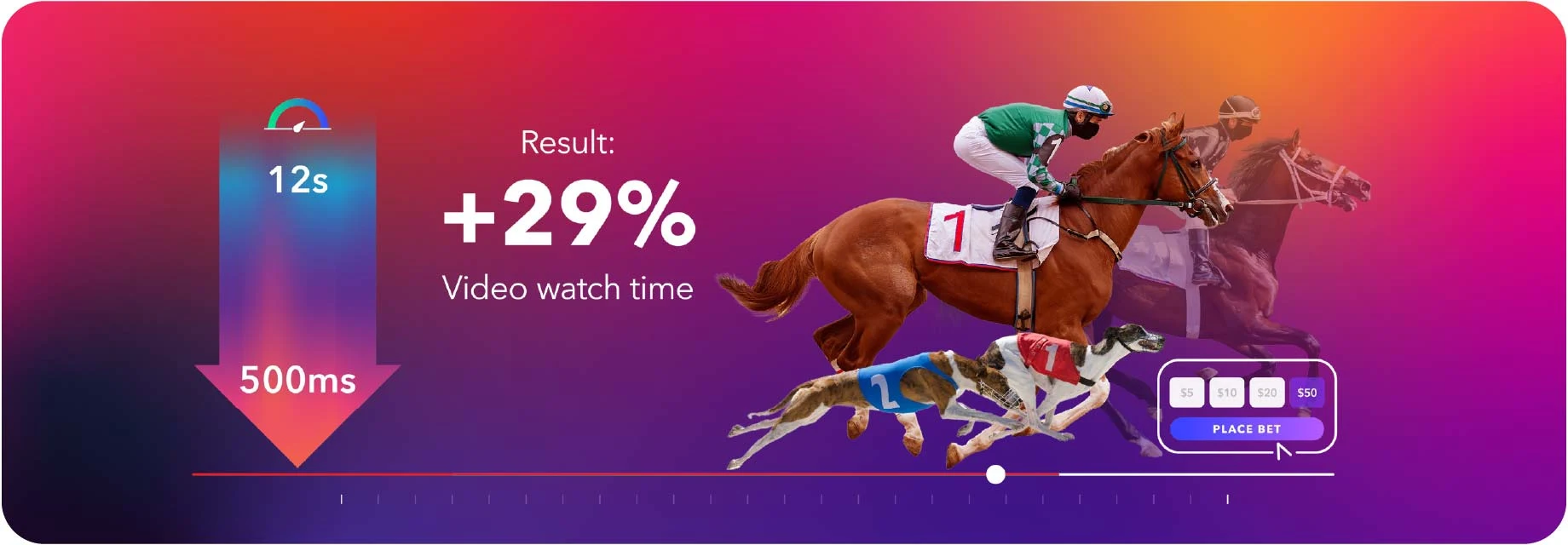
Increased viewer engagement with data-video synchronization
In live sports betting, like football, aligning stream latency with data latency allows users to watch and bet on the same platform without needing to switch to another source. This creates a smooth experience that keeps users focused on the action. When video and data are in sync, distractions from delayed visuals or suspended markets are minimized. This leads to higher engagement, longer session durations, more interactions, and higher revenue for sportsbook platforms.
Enhanced fairness and trust
Fairness is the foundation of trust in sports betting. Low latency makes sure everyone sees the action at the same time. This prevents unfair advantages and helps build trust in your platform. When no one is ahead of the stream, the experience feels fair for all viewers, which is key to keeping your platform credible and competitive.
Key considerations for real-time streaming in sports betting
When choosing a streaming solution, sports betting platforms need to look beyond just low latency. A premium streaming service should also offer consistent performance across regions, the ability to scale quickly, strong security, and valuable data insights. Below are some of the key factors to consider.
Handling flash crowds
In short-duration events like horse racing, there are often a large number of viewers in a very short time. This sudden spike in traffic, known as a flash crowd, can strain streaming systems. The streaming solution must stay reliable and scalable for handling these surges without affecting video quality or increasing latency.
Streaming into emerging regions like APAC and LATAM
Besides scalability, region coverage is another key consideration. Emerging markets such as Asia-Pacific and Latin America offer exciting growth opportunities for sports betting. These regions are seeing a rise in real-time wagering, driven by a strong sports culture and growing interest in interactive entertainment. However, inconsistent internet infrastructure remains a challenge in many areas.
To succeed in these markets, streaming platforms need to have infrastructures that deliver smooth, high-quality video streams at scale. Solutions like Dolby OptiView Streaming are designed to meet this need, offering robust content delivery networks that maintain consistent quality and latency across diverse regions.
Ensuring high-quality streams over consumer Internet connections
Streaming relies on internet connectivity. However, even in regions with advanced infrastructure, consumer internet connections can still be unpredictable and inconsistent. Bettors like to access live streams from various environments such as public transport, crowded venues, or inside betting shops, where network stability cannot be guaranteed. In these situations, maintaining consistent low latency streaming becomes a significant challenge.
Any interruptions in stream quality, such as buffering or loading delays, can quickly lead to user frustration and a loss of trust in the betting platform. This is especially critical during in-play betting, where timing and responsiveness are essential.
To overcome this, sports betting providers require a robust streaming solution that performs reliably under unstable and fluctuating network conditions. Dolby OptiView Streaming is engineered to deliver consistently smooth and high-quality video with configurable latency between 0.5 and 5 seconds, even when internet connections are less than ideal.
Optimizing with real-time statistics
Besides delivering reliable streams to bettors at desired latency, a premium real-time streaming solution also provides detailed data insights. This includes data on viewer numbers, locations, stream quality, and device usage. When combined with betting data, these insights can help platforms optimize in-play betting strategies and improve the overall user experience.
For betting shops, a streaming solution can be deployed to work with set-top boxes. In addition, by setting up a unique identifier for each device, operators can access detailed usage statistics and performance data at the individual device level. This level of insight supports more accurate traffic analytics and enables proactive issue detection. As a result, maintenance teams can troubleshoot problems more efficiently and manage devices remotely across multiple locations, significantly reducing the time and effort required for on-site support. Today, betting shops like Paddy Power are using Dolby OptiView Streaming to optimize their retail operations.
Driving retail sportsbook innovation with streaming technology
An increasing number of betting shops are shifting from traditional satellite broadcasts to internet-based streaming solutions. This transition is driven by the broader range of available content, greater flexibility in stream selection, and significantly lower operational costs. The rapid advancement of real-time streaming technology is opening up new possibilities that were previously out of reach. These innovations are transforming the way betting shops engage with their audiences. Here are a few examples:
Multi-game live streaming
With multi-view functionality, it is now possible to stream several games on a single screen. This is especially useful for betting shops that have limited screen space but want to show a wider variety of live sports events. By displaying multiple streams at once, shops can provide more options to bettors without the need to invest in additional hardware.
Touchscreen channel selection for betting shops
In betting shops equipped with touchscreen displays, multi-view streaming can be taken a step further. Individual bettors can choose which games they want to watch, creating a more personalized and interactive experience. This level of control keeps users more engaged and increases the likelihood of them placing bets on multiple games, as they can easily follow all the action in real time.
Improved video quality experience
Streaming rights often place limits on the resolution of sports betting streams, which can affect the overall viewing experience. To overcome this challenge, companies are actively exploring AI-powered encoding solutions that improve video quality without increasing the bitrate. This technology enhances visual clarity while staying within existing technical and licensing constraints. It is an exciting advancement that holds great promise for the future, offering viewers a significantly better experience once it becomes widely available.
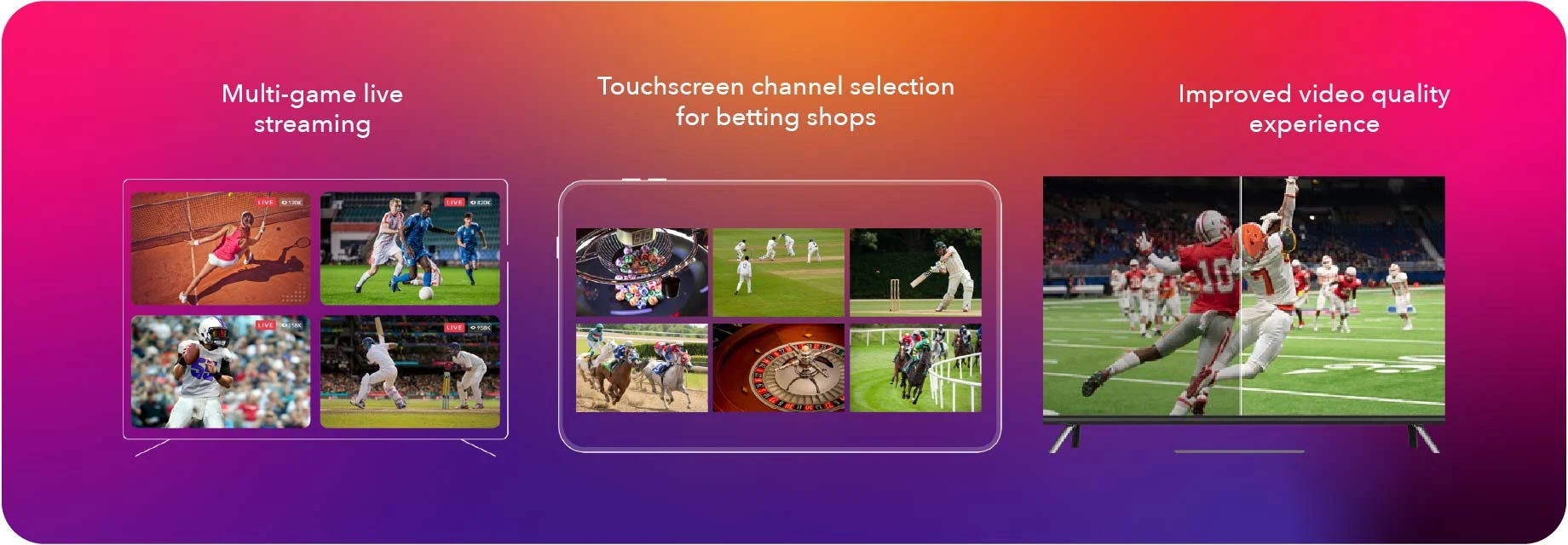
Conclusion
Real-time streaming plays a key role in shaping the sports betting experience. Different use cases require different latency levels, and getting this right improves fairness and engagement. Platforms also need to manage sudden traffic spikes, ensure smooth delivery in emerging regions, and protect content while gathering useful data insights. Innovative features like multi-game viewing and AI-enhanced video quality are helping create more engaging and flexible experiences. Together, these elements show how streaming technology supports both better user experiences and revenue growth.



